How Don James ... and maybe a Rolling Stones concert changed Kent State football history
Fred Blosser played football so long ago and spent so many years in a necktie that people forgot he was a tremendous Kent State center — if they ever knew.
As superintendent in the Fairless, Dalton, Canton and Massillon school districts, Blosser came across as a smart, tough, get-'er-done, even restless dynamo.
The traits must have applied to his days in a helmet. Except, fearless Fred was a little wary of Bob Bender.
Kent State's 1970 football season unfolded months after the May 4 shootings and was full of incongruity and strife.
The only Golden Flash to make first-team, All-Mid-American Conference was Blosser; none made second team.
Head coach Dave Puddington got caught in a toxic May 4 aftermath. His Flashes lost 44-0 to Bowling Green early, and he resigned when a 3-7 season ended.
It took some guts for Don James to walk into that situation, but he wasn't getting any younger, and the Kent State job, whatever the difficulties, was available and close to home.
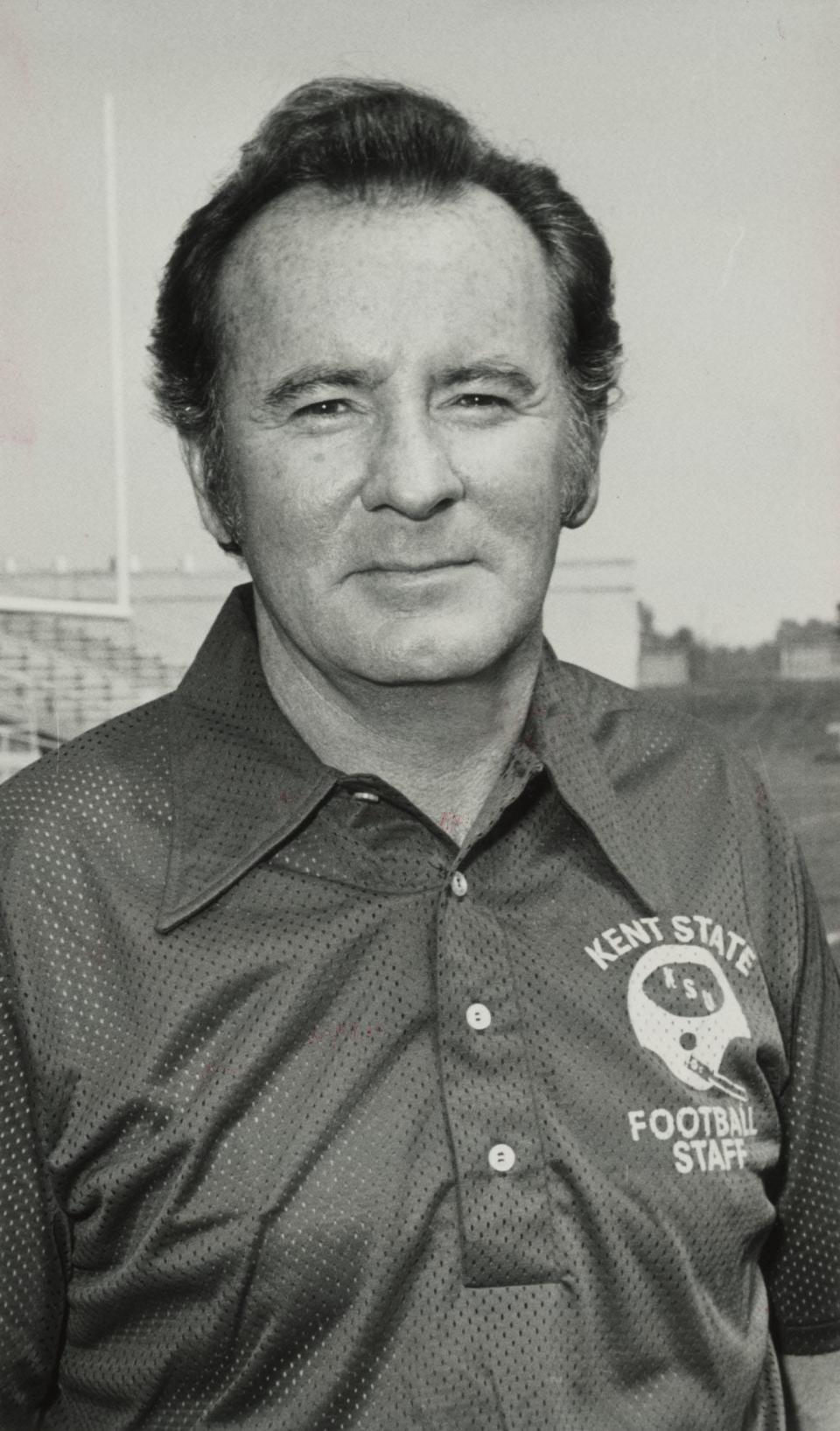
'The man at the top': Don James takes over as Kent State football's coaching
James' persona and appearance resembled that of Coach Norman Dale, the movie coach immortalized by Gene Hackman in "Hoosiers."
"Everybody knew there was a new sheriff in town," recalls Ted Bowersox, who had been a starting quarterback under Puddington. "It was night and day. Whatever you had thought you were getting away with, you didn't get away with Don James."
James played high school ball for Massillon, near Blosser's hometown.
They met in 1967 at Michigan, where Blosser was a freshman walk-on and James was an assistant coach. Blosser transferred to Kent State in 1968.
They reconnected at Kent State in 1971, not on a chummy basis, but in a way that led James to make Blosser a team captain.
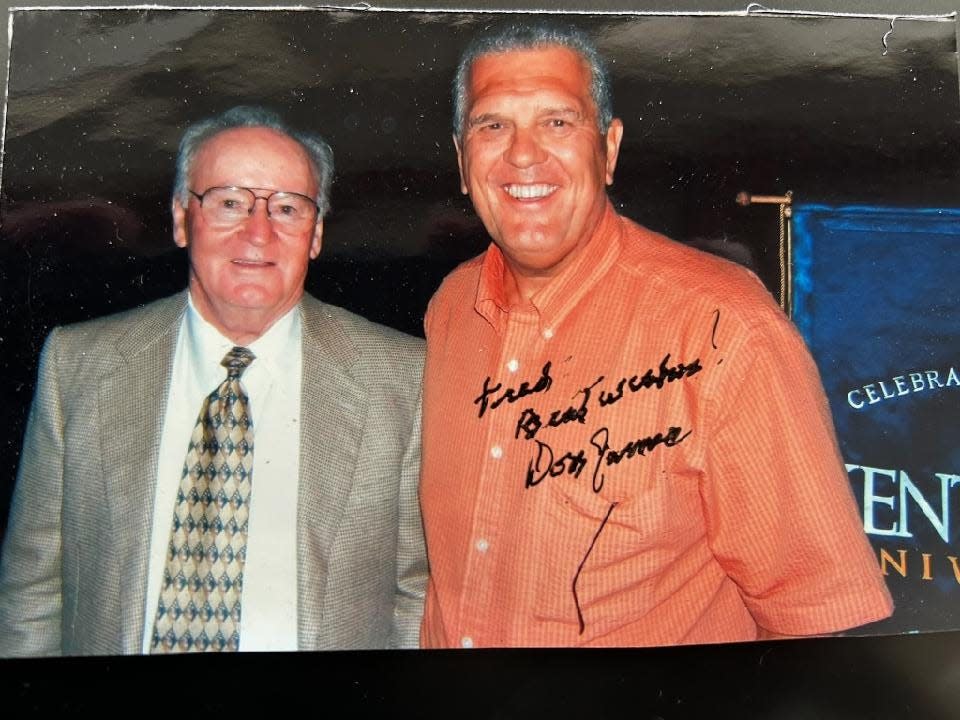
"Don watched our practices from a tower," Blosser recalls. "From that bird's eye view, he seemed to have 12 sets of eyeballs.
"Everyone knew their actions and attitudes were being scrutinized by the man at the top.
"Some players didn't like the new intensity. A few threw down their helmets and walked off the field. Coach James would just calmly say to an assistant coach, 'Have the trainer collect his equipment.'"
Bob Bender needed a team. His original team, Buffalo, dropped football after the 1970 season. James welcomed Bender to Kent State, where, according to Blosser, he stood out in 1971 spring practice.
"Don increased the contact at practice," Blosser said. "There was a one-on-one drill at a rack that was about three feet off the ground. That was pretty intense.
"That led to the spring game, which Don arranged in a new way. The first-team offense went against the first-team defense in full game conditions.
"I had been working against Bob Bender. He was as tough as any middle linebacker I ever went against.
"I recall as clearly as yesterday the night before the spring game. I could hardly sleep because I knew I would be going against Bob.
"We went to team breakfast the morning before the spring game and people were saying, 'Bender left camp.'
"I had no idea why."
Bender's disappearance is a magical mystery tour in Kent State football history.
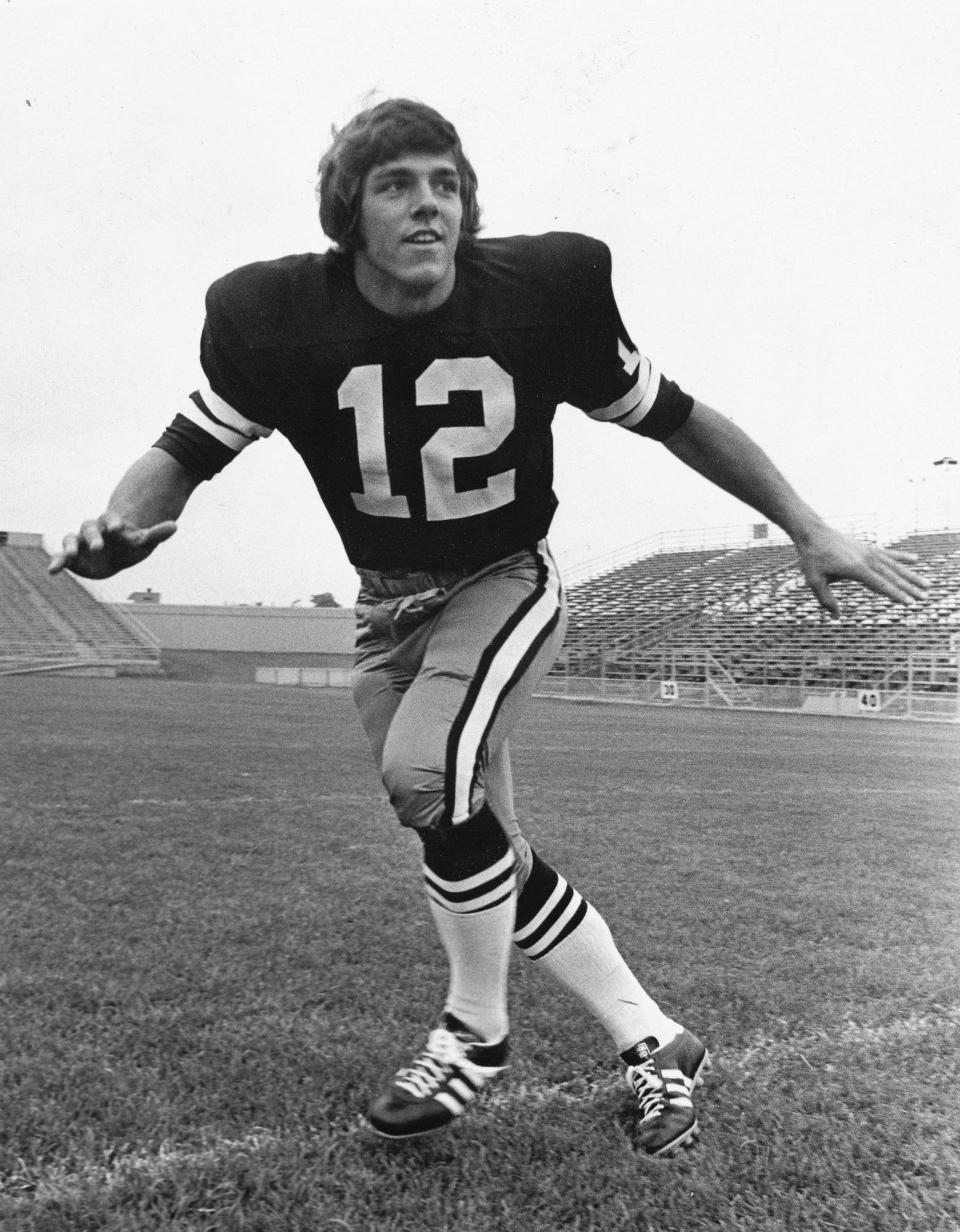
The Rolling Stones find a bodyguard on the Kent State football roster
Nick Saban was a sophomore safety when James took over in 1971. In 2021, on the radio show that is part of his Alabama coaching gig, Saban shared a story about a Rolling Stones concert at which Kent State players were hired as part of the band's security force.
“Bender’s on the stage," Saban said. "Mick Jagger comes off. Somebody tries to throw something at him and Bender knocks it out of his hand. Jagger calls him in and hires him as the bodyguard."
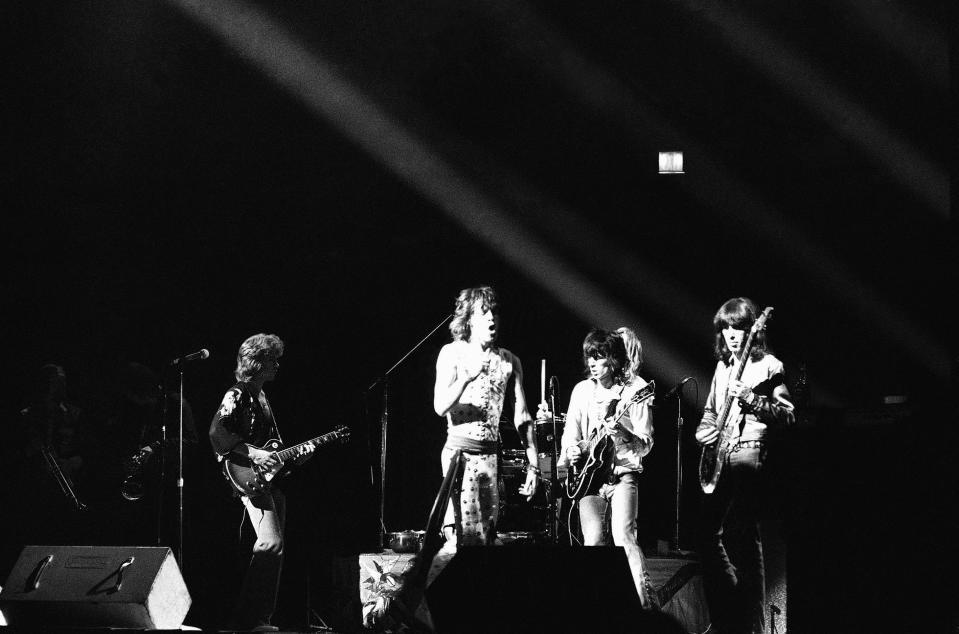
In a more recent interview, with The Canton Repository, Saban admitted memories of those times can get blurred.
Bender did indeed become a bodyguard for Jagger, and is quoted in old Rolling Stone magazine articles about that line of work.
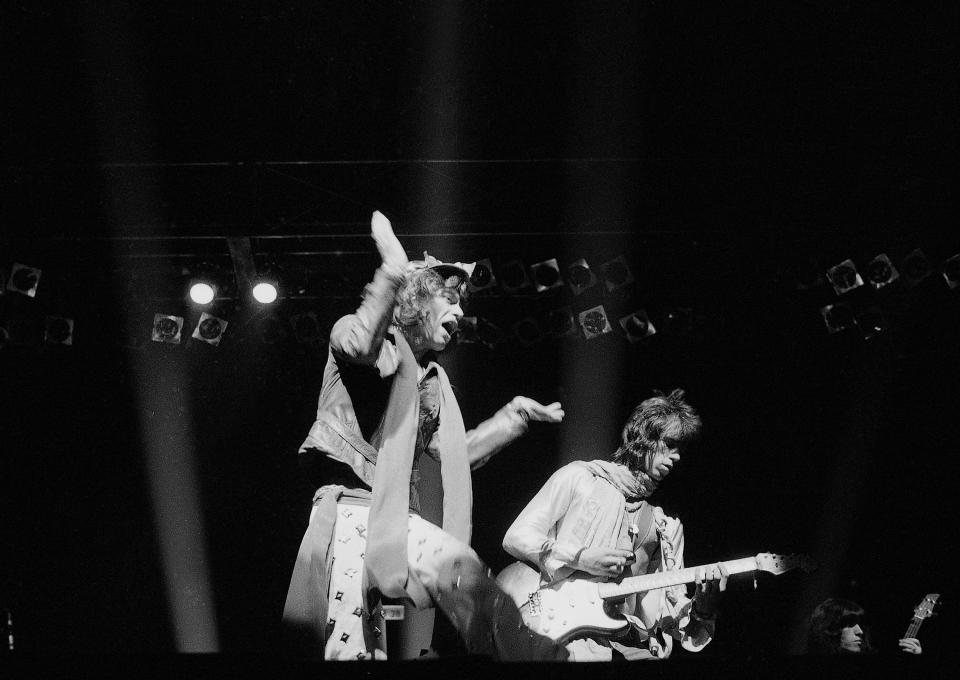
In a 1975 cover story, Rolling Stone described him as Bob “Mr. Goodbar” Bender – the 260-pound blond security man who sat and sunned himself for 90 minutes every morning at the pool."
The article notes that Bender befriended Kent State baseball player Jim Stepp, who formed Sunshine Security to work at Midwestern rock concerts; Bender signed up.
On July 11, 1972, the Stones played to an estimated 50,000 at the Akron Rubber Bowl. Advance tickets cost $5.50; Stevie Wonder was the warmup act; the crowd became unwieldy.
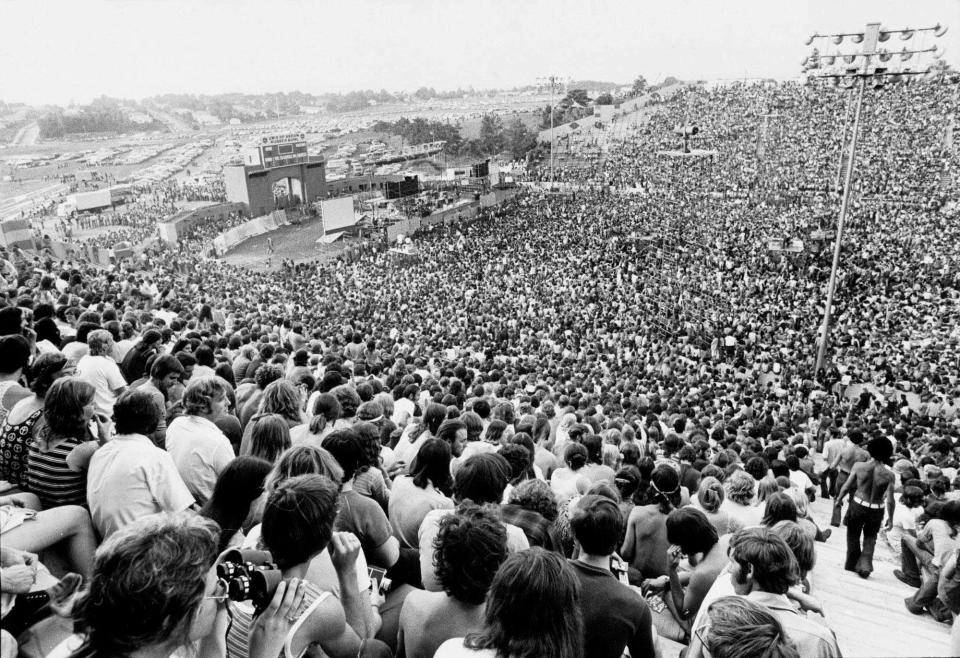
Bob Bender exits as Kent State's middle linebacker, in steps a future Pro Football Hall of Famer
Blosser is sure only that he anticipated a long day against Bender in the practice game, that Bender didn't show, and that he never saw him again.
Blosser had no inkling why Bender vanished until he caught wind of Saban's 2021 explanation (Bender actually remained at Kent State as a student, en route to a long career in security, these days with Billy Joel).
It isn't even Blosser's favorite part of the story.
"I was relieved Bender was not there," he said. "Instead I had to go against a middle linebacker they moved from defensive end to middle linebacker."
The new middle linebacker went on to be a Pittsburgh Steelers icon and first-ballot Pro Football Hall of Famer.
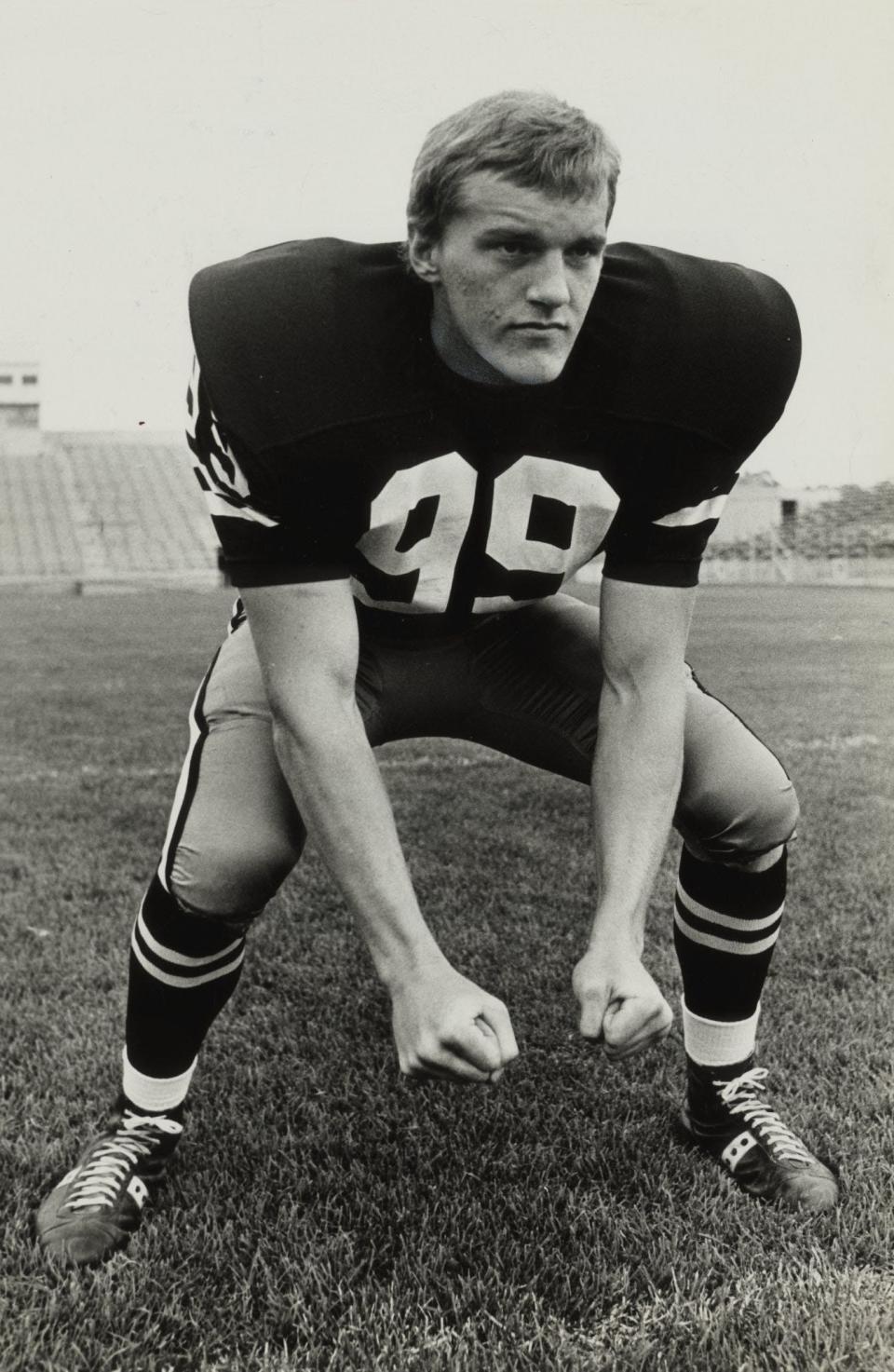
"I might be the only center who was relieved to go against Jack Lambert," Blosser said.
Lambert came from Mantua Crestwood High School, 15 miles north of Kent. He wasn't a good enough quarterback and was too skinny a defensive end to attract Ohio State. His interest in Miami (Ohio) wasn't reciprocated.
He became a Kent State freshman a few months after the May 4 tragedy. The NCAA didn't allow freshmen to play then, but they could practice.
Puddington kept Lambert at his Crestwood position, defensive end, for workouts leading up to the 1970 season.
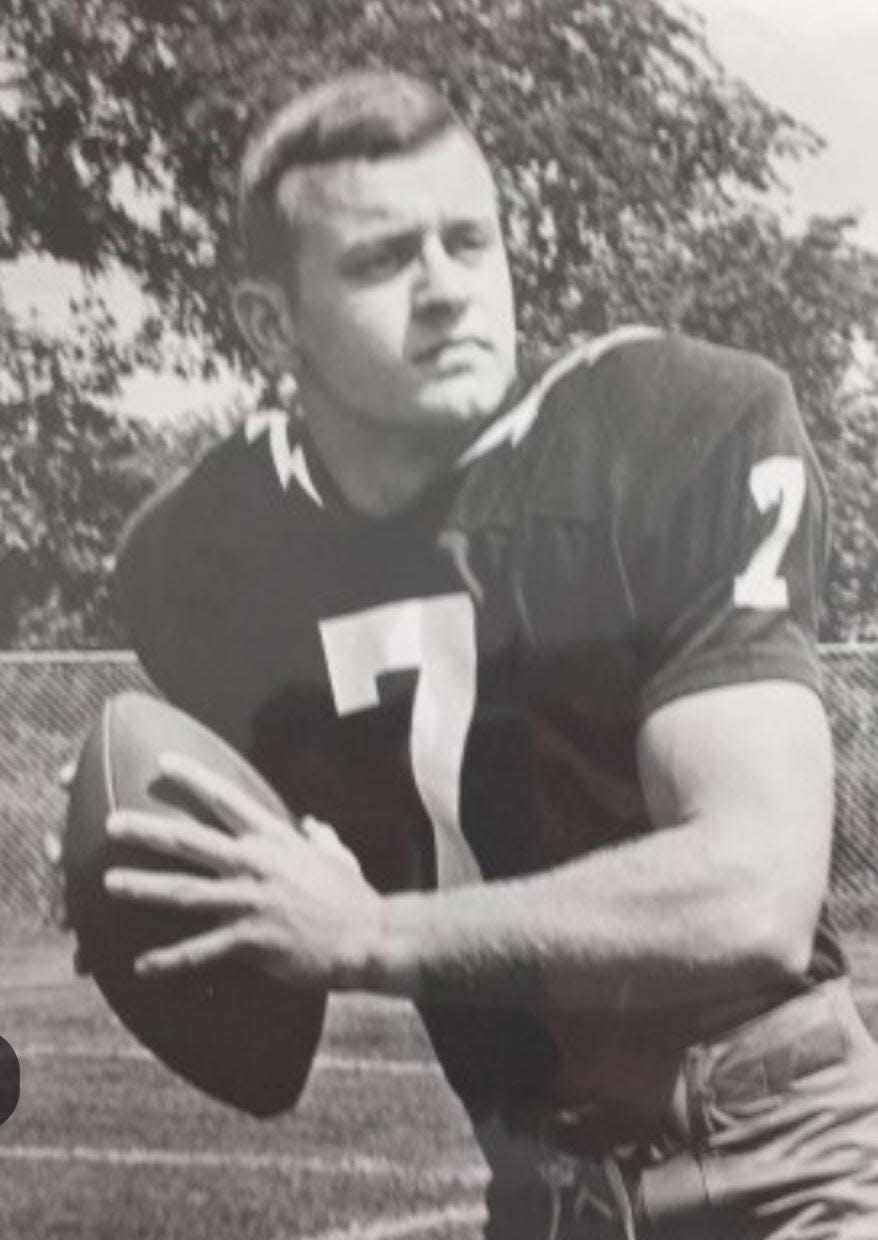
Bowersox, coming off five starts at quarterback, was trying to beat out Steve Broderick and Larry Hayes.
"I was rolling for a pass and I got slammed by Jack Lambert," Bowersox recalls. "He just knocked the crap out of me. He knocked me out.
"I don't remember how I got from the field to the training table. I got a whole bunch of shots in my neck. I have arthritis there now. I can't turn my head to the right because of Jack."
Lambert worked at defensive end until Bender was a no-show for the spring game. The revised battle — center Blosser vs. middle linebacker Lambert — began that day and resumed in summer practice.
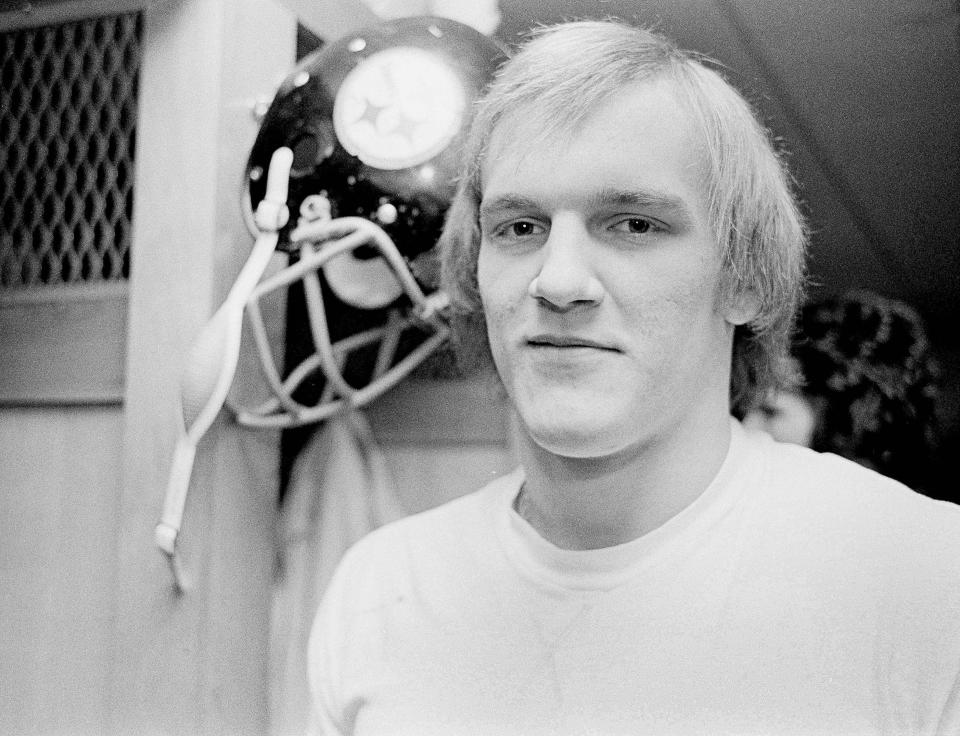
"Jack was extremely, extremely intense," Blosser said. "He was the only person who got to me so much that the coaches had to break us up. After I had a successful block or two on him he shoved my face into the dirt, which I didn't like.
"He wasn't upset with me. I hold nothing against him for that. It showed he had something in him."
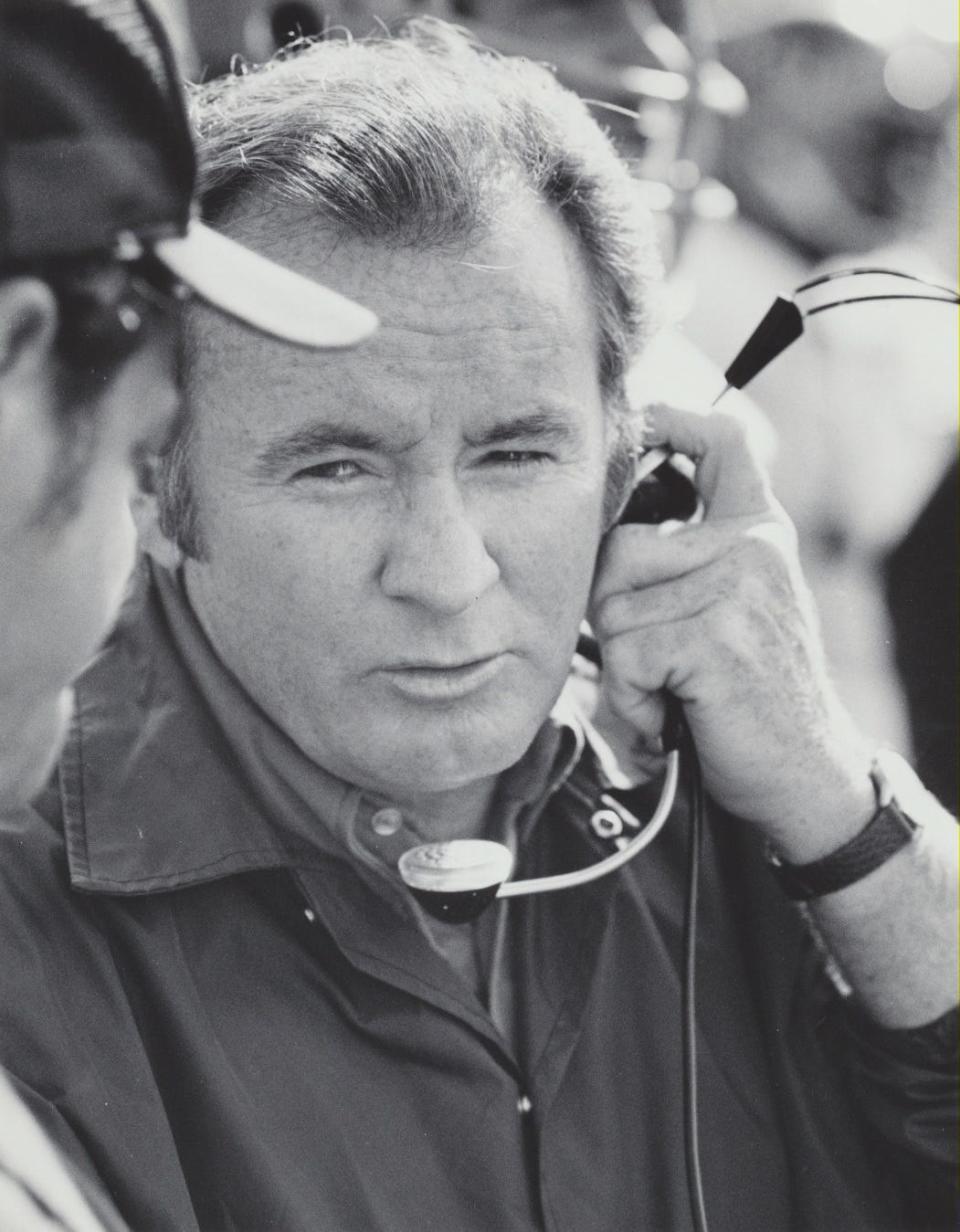
Despite another losing season in 1971 the Golden Flashes were 'coming into our own because of Don James'
The Don James era began with a 23-21 win at North Carolina State on a last-second field goal by Gordon Ober. It was a mirage.
November losses to Miami and Toledo by a combined 71-6 score put a damper on a 3-8 season.
Kent State football went from troubled to invisible. Of the 48 players who made first- or second-team, All-MAC in James' first year, none was a Golden Flash.
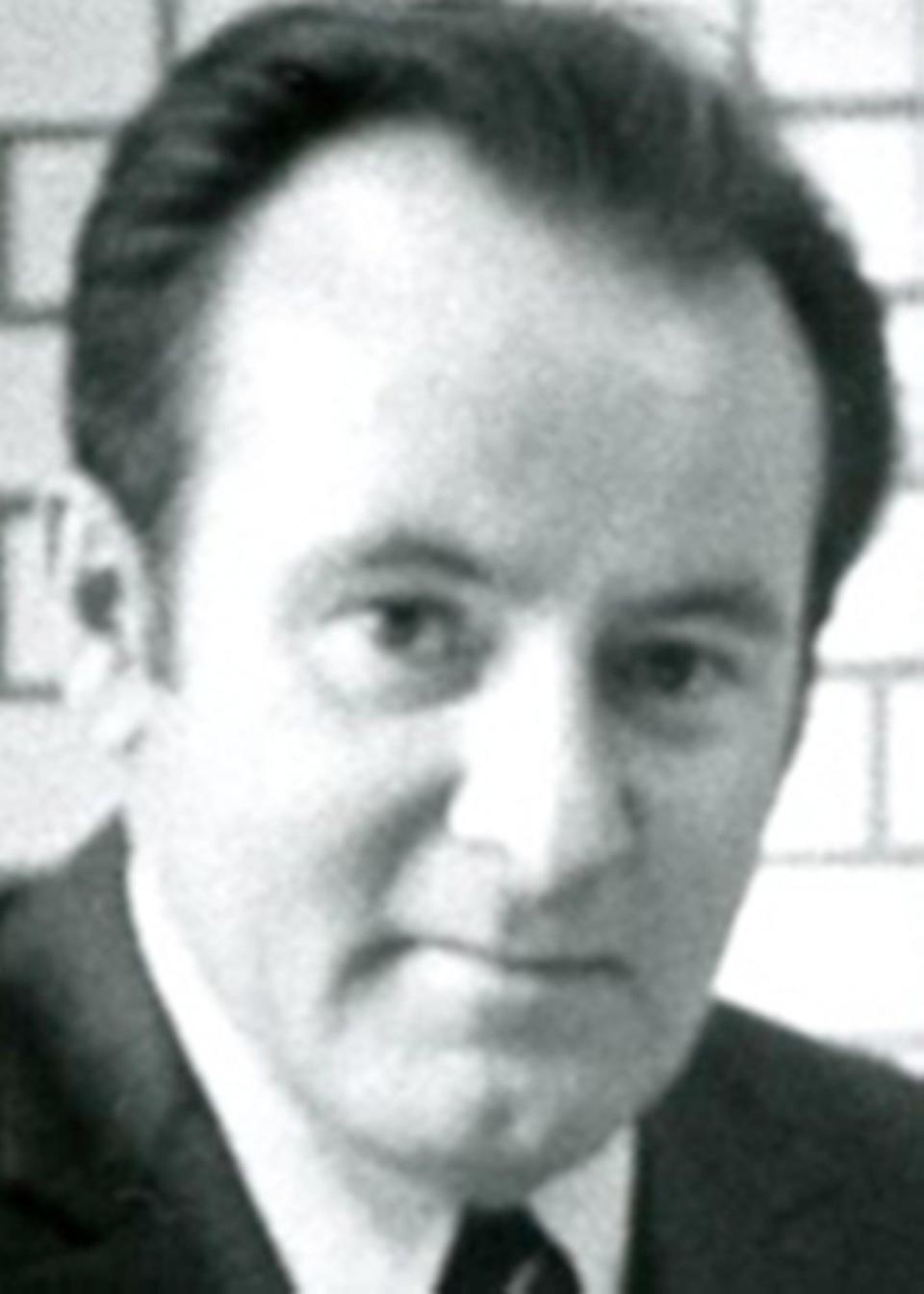
It seems fair to observe James' biggest task in that first season was normalizing the environment so soon after the 1970 campus shootings.
In his recent interview with The Repository, Saban thought otherwise.
"Don James was so positive in the way he approached things," Saban said. "He had a process in the way he wanted to do things.
"The transition in what you called trying to normalize things didn't even seem like it existed. It was more like, 'I don't care what the circumstances are. This is the way we're going to go about this.'
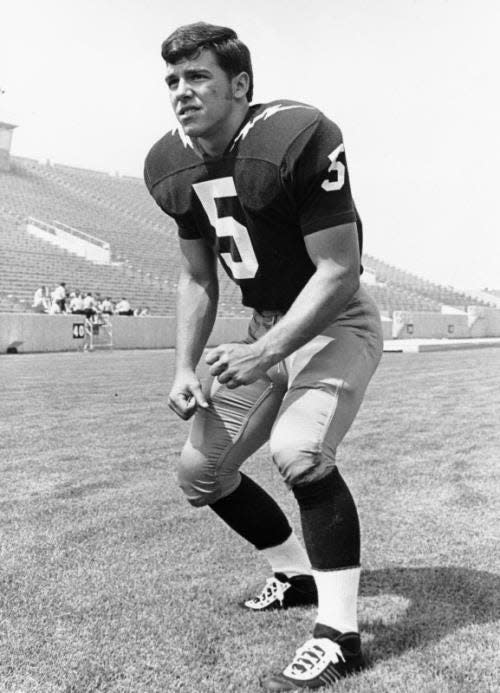
"He came up with a plan of, how do we minimize the effect of this and maximize what we're trying to accomplish? How can we try to help you create value for your future, play here, have success and graduate? That's the best I can explain it, I guess."
Saban played on the same side of the ball as Lambert.
"Bob Bender was a really good player," Saban said. "Don James had to replace him. Don took the attitude that what seemed to be a real negative turned into a real positive.
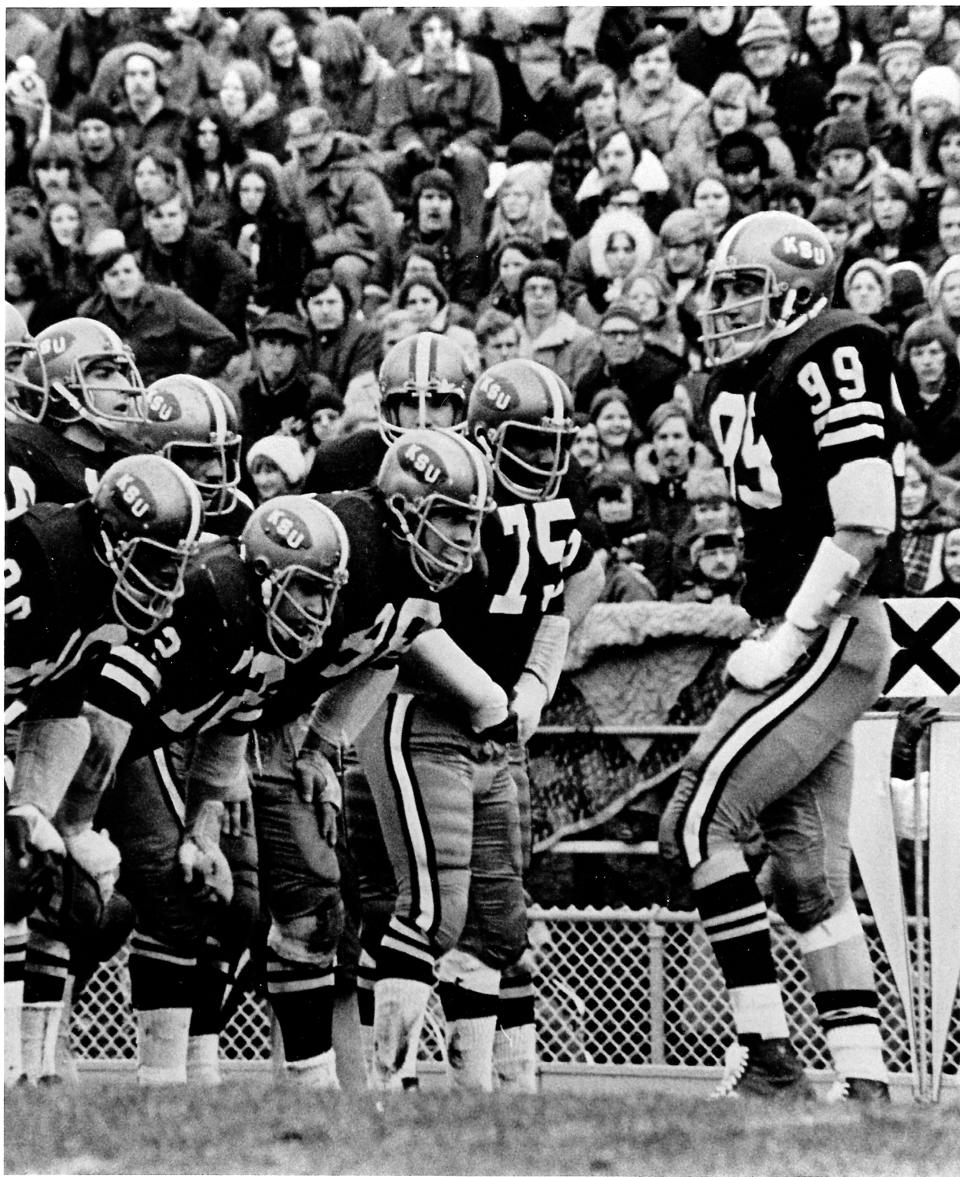
"Jack moved to middle linebacker. He was such a great competitor. He brought a different mentality to the whole team, really."
Blosser's time at Kent State was up after the 1971 season.
"We were just coming into our own when I left," he said. "We were coming into our own because of Don James."
This article originally appeared on The Repository: Don James, Jack Lambert change Kent State football after May 4, 1970

